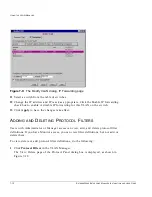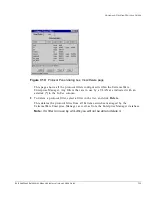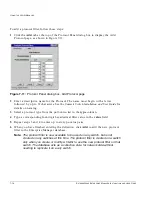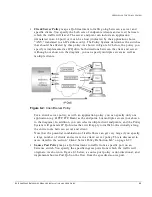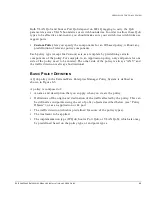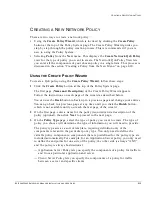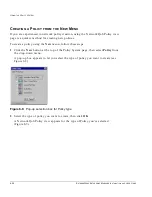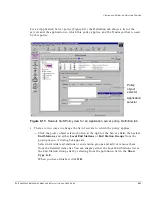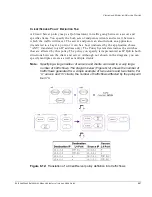
8-12
E
XTREME
W
ARE
E
NTERPRISE
M
ANAGER
I
NSTALLATION
AND
U
SER
G
UIDE
U
SING
THE
P
OLICY
S
YSTEM
For Extreme switches, there is a set of rules to determine the precedence. See the
ExtremeWare Software User Guide, V 4.0, Chapter 8, “Quality of Service (QoS)” for details.
Root class bandwidth-allocation parameter.
Under the Xedia 2.1 R3 software, for an
ethernet interface, the root CBQ class is created by default with a value that is the same
as the interface speed—the nominal bandwidth of the interface. For example if the
ethernet interface is specified as 10 Mbps, then the root CBQ class is created with 10
Mbps as the bandwidth-allocation parameter. However, under congestion, the CBQ
classes (for ethernet interfaces only) will not function if they are configured with a
bandwidth allocation parameter that is greater than the actual bandwidth of the
interface. You must change the bandwidth-allocation parameter for the root CBQ class
to be less than the actual bandwidth of the interface.
For example, for a 10Mbps ethernet interface transporting small (64 byte) packets, the
actual throughput may be only 7.2 Mbps. In this case you should set the bandwidth
allocation parameter to a value that is approximately 3% below this actual bandwidth
(6.8 Mbps) in order for the CBQ class configuration to be effective. For larger packets,
the actual bandwidth will more closely approach the nominal bandwidth of the
interface.
This limitation exists only for ethernet interfaces, in the Xedia 2.1 R3 software. Contact
Xedia for additional information.
Managed Interface.
CBQ classes are defined per interface. ExtremeWare Enterprise
Manager tries to set up the same CBQ class hierarchy on every interface that has the
root class “root-output-tree” and where the root class is active. If you do not want
Enterprise Manager to manage a specific interface, you can remove the root class or
make the root class inactive.
Ownership of the CBQ class hierarchy.
For interfaces that you want ExtremeWare
Enterprise Manager to manage, you should not create CBQ classes under the root class.
If you do, the policies that Enterprise Manager puts on the Xedia device may not
function.
•
QP3
•
QP2
Lowest
QP1
Precedence
Profile
Summary of Contents for ExtremeWare Enterprise Manager
Page 10: ...x ...
Page 16: ...xvi ...
Page 20: ...XX EXTREMEWARE ENTERPRISE MANAGER INSTALLATION AND USER GUIDE PREFACE ...
Page 188: ...8 60 EXTREMEWARE ENTERPRISE MANAGER INSTALLATION AND USER GUIDE USING THE POLICY SYSTEM ...
Page 248: ...C 6 EXTREMEWARE ENTERPRISE MANAGER INSTALLATION AND USER GUIDE DATABASE UTILITIES ...

